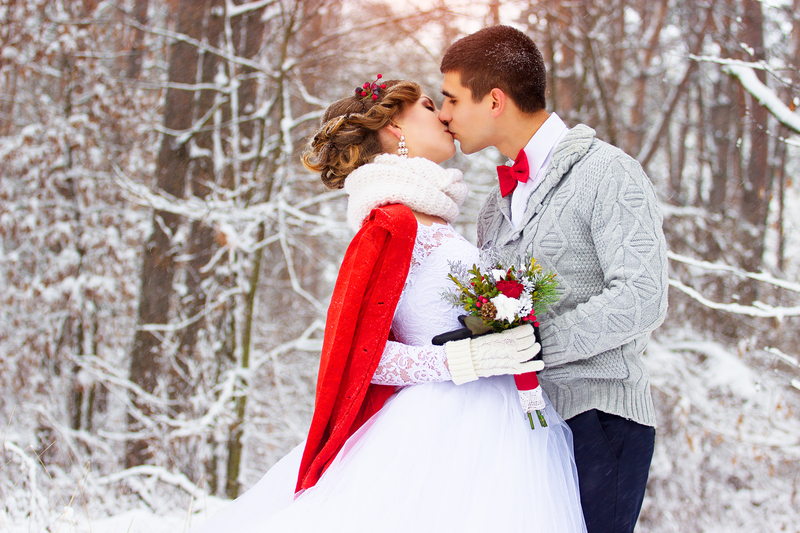Extending the Life of Your Poinsettias
Posted on 02/07/2025
Extending the Life of Your Poinsettias: A Complete Guide
Poinsettias are synonymous with the holiday season, adding a vibrant touch of red, pink, cream, or white to homes worldwide. While most people view poinsettias as temporary holiday decorations, these beautiful plants can actually thrive for months--and even years--with the right care. Learn how to extend the life of your poinsettias with expert tips, practical strategies, and answers to common questions, ensuring your festive blooms stay healthy well past the new year.

Why Do Poinsettias Fade So Quickly?
Often, people assume poinsettias are short-lived because their color diminishes or the leaves drop soon after the holidays. However, the plant's reputation for short-term beauty is more about improper care than its natural life cycle. Many factors influence the longevity of poinsettias, including:
- Exposure to temperature extremes
- Incorrect watering practices
- Insufficient light
- Drafts or sudden temperature changes
- Neglect after the festive season
Proper care and a little extra attention can help your poinsettia thrive from one holiday to the next--sometimes for years at a time! Read on to discover all you need to know about extending the lifespan of poinsettia plants.
Choosing the Healthiest Poinsettia
The foundation for a long-living poinsettia starts at the point of purchase. Follow these tips for selecting a healthy poinsettia:
- Look for vivid, firm bracts: The colored leaves, or bracts, should be intense in color and not wilting or curling.
- Inspect the true flowers: At the center of the bracts, you'll see tiny yellow-green buds (cyathia). Choose a plant where these buds are intact and not shedding pollen.
- Check for strong stems and foliage: The plant should be full, with lush green leaves--avoid those with droopy leaves or stems.
- No signs of pests or disease: Examine both sides of the leaves for spots, holes, or sticky residue.
*Tip: Avoid plants displayed near store entrances, as cold drafts can shock poinsettias, reducing their post-purchase lifespan.*
Ideal Growing Conditions for Poinsettias
Light Requirements
Poinsettias need bright, indirect light to flourish. Too little light will cause the plant to become leggy or drop leaves, while direct sunlight may scorch the foliage. Place your poinsettia near a sunny east or west-facing window but out of direct midday sun.
Temperature & Humidity
- Optimal temperature: 60-70?F (15-21?C) during the day, dropping no lower than 55?F (13?C) at night.
- Protect from drafts: Keep away from cold windows, exterior doors, radiators, and fireplaces.
- Humidity: Poinsettias appreciate moderate humidity. If your home is dry, consider using a humidifier or placing a pebble tray with water beneath the plant's pot.
Watering and Drainage
Overwatering is the most common reason poinsettias fail after the holidays. Water only when the top inch of soil feels dry. Always remove the decorative foil pot cover before watering, or poke drain holes to allow excess water to escape. Let water drain thoroughly--never let your poinsettia sit in standing water.
Routine Care to Prolong Poinsettia Life
Fertilizing
After the blooming period (beginning in late winter or early spring), feed your poinsettia with a balanced, all-purpose houseplant fertilizer. Apply every 3-4 weeks, following package instructions. Do not fertilize while the bracts are brightly colored, as the plant needs rest.
Pruning Your Poinsettia
Pruning is key to encouraging fuller, bushier growth and a more attractive plant for next year. After the colorful bracts (modified leaves) have faded and fallen, typically in late winter or early spring, use clean scissors or pruners to cut stems back to about 4-6 inches from the soil. This will stimulate new shoots.
- Continue to pinch back growing tips throughout spring and summer to maintain shape and prevent legginess.
- Always wear gloves: Poinsettia sap can irritate sensitive skin.
Repotting
If your poinsettia has outgrown its container or shows signs of being root-bound, repot in spring using a well-draining, peat-based potting soil. Choose a slightly larger pot with good drainage holes.
Seasonal Care: A Month-by-Month Poinsettia Care Calendar
Following a calendar of care can help you know how to keep poinsettias alive and thriving all year long. Here's a month-by-month guideline:
- December - January: Enjoy your poinsettia's colorful display. Keep away from drafts, heat sources, and cold windows. Water when needed and ensure good indirect light.
- February - April: As the bracts fade, reduce watering and prune stems back to 4-6 inches. Resume regular light exposure.
- May: Repot if necessary. Fertilize every 3-4 weeks. Once nighttime temperatures are consistently above 55?F (13?C), you may move the plant outdoors to a shaded, protected spot.
- June - August: Keep watered and fertilized. Pinch back stems to promote bushiness. Shade from harsh midday sun.
- September: As temperatures drop, bring your poinsettia back indoors before the first frost. Continue watering and fertilizing as normal.
- October - November: Begin photoperiod treatment to encourage the plant to re-bloom (see below).
How to Get a Poinsettia to Re-Bloom
A common question is whether you can make poinsettias turn red (or other colors) again next year. The answer is yes! Poinsettias are short-day plants, meaning their blooming is determined by the length of daylight they receive.
Photoperiod Treatment for Reblooming
- Start in late September or early October.
- Provide 14-16 hours of complete darkness each night (for at least 8-10 weeks) by placing the plant in a closet or covering it with a box or opaque bag.
- During the day, give the plant 6-8 hours of bright, indirect light.
- Continue regular care--watering and light fertilizing--throughout the process.
After 8-10 weeks, you should see colorful bracts forming, just in time for the next holiday season!
Common Problems and Solutions in Prolonging Poinsettia Life
Leaf Drop
- Causes: Sudden temperature changes, drafts, poor watering habits, or low light.
- Solution: Keep poinsettia in consistent conditions and follow a regular watering schedule. Avoid placing near entryways or heat vents.
Leggy Growth
- Causes: Insufficient light or lack of pruning.
- Solution: Provide brighter, indirect light and pinch back stems in spring and summer.
Wilting or Root Rot
- Causes: Overwatering or poor drainage.
- Solution: Allow the soil to dry slightly between waterings; discard excess water from trays and pot covers.
Pest Infestations
- Common pests: Whiteflies, spider mites, aphids.
- Solution: Inspect regularly. Remove pests with a gentle spray of water or use insecticidal soap if needed. Isolate infested plants.
Decorative Uses for Long-Lived Poinsettias
One of the joys of prolonging poinsettia life is enjoying the plant beyond December. Here are creative ways to use thriving poinsettias in your home decor:
- Pair with green foliage plants for a bold year-round display.
- Grow in larger containers as a dramatic accent for patios or indoor entryways (in suitable climates).
- Use as a low-maintenance office or classroom plant with regular care.
- In warmer climates, plant outdoors in protected beds for stunning spring and summer color.

Frequently Asked Questions about Extending Poinsettia Life
Are poinsettias toxic to pets?
While often rumored to be highly poisonous, poinsettias are only mildly toxic to cats and dogs. Ingesting the sap may cause mild stomach upset, drooling, or skin irritation. Keep out of reach of curious pets and children as a precaution.
Can you grow poinsettias outdoors?
In USDA Zones 9-11, poinsettias can flourish outdoors all year. In cooler climates, enjoy outdoors in summer, but bring inside before frost. Always acclimate gradually between indoors and outdoors.
How long do poinsettias live?
With attentive care, poinsettias can live for several years and re-bloom annually! Your plant may thrive season after season if you follow the tips outlined above.
Conclusion: Enjoy Your Poinsettia All Year Long
Extending the life of a poinsettia is not only possible--it's rewarding! With the right selection, environmental conditions, and ongoing care, these spectacular plants can become part of your annual holiday tradition and brighten your home year-round.
Start with a healthy plant, protect it from stress, prune and repot as needed, and follow the calendar of care. For the ambitious gardener, reblooming provides the ultimate sense of accomplishment. Enjoy your thriving poinsettias for seasons to come!
With these expert tips, you'll never have to throw away another poinsettia once the holidays are over--keep the festive cheer alive throughout the year!







